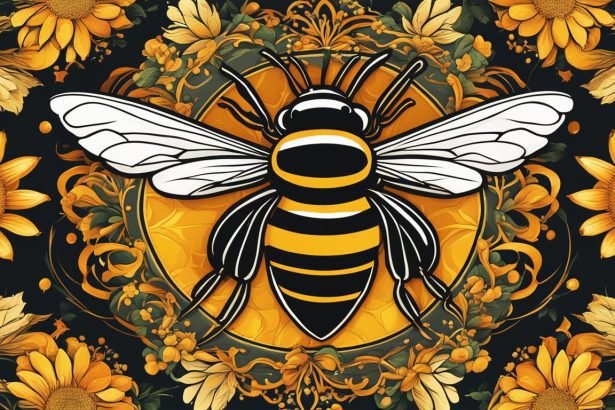You’re doom-scrolling TikTok when it hits you: a “clean girl” aesthetic reel with dewy skin, a green smoothie, and a linen dress so crisp it practically whispers serenity. Or maybe it’s a “dark academia” mood board on Pinterest—tweed blazers, candlelit books, and a brooding vibe that screams I read Dostoevsky for fun. Then there’s “balletcore,” all soft pinks and satin ribbons, promising elegance in every step. These aren’t just trends. They’re worlds you can step into—playlists, decor, and all. But as you save that “cottagecore” recipe or covet a “coastal grandmother” sweater, a question lingers: Are you using these aesthetics to find yourself, or to avoid the real you?
The Siren Call of a Ready-Made Vibe
Let’s be real: aesthetics are intoxicating. They’re like stepping into a Netflix series with a prewritten role. “Clean girl” hands you a script of minimalist calm—think slicked-back buns and skincare as meditation. “Dark academia” casts you as a brooding scholar, surrounded by leather-bound tomes and late-night poetry. “Balletcore”? You’re a poised dancer, all leg warmers and graceful sips of chamomile tea. Each one comes with a community, a color palette, and a promise: this is who you could be. No soul-searching required—just hit “add to cart” and embody the vibe.
This isn’t a new game. From 80s punks with spiked hair to 70s hippies in tie-dye, we’ve always flocked to visual tribes. But today’s aesthetics move at warp speed, fueled by Instagram’s glossy grids and TikTok’s endless scroll. One day, you’re channeling “coastal grandmother” with oversized knits and beachy elegance; the next, you’re knee-deep in “cottagecore,” baking sourdough and dreaming of meadows. Social media doesn’t just suggest styles—it serves up entire identities, ready to wear.
A Playground or a Prison?
So, what’s the deal? Are aesthetics a sandbox for self-discovery? Sometimes, yeah. Slipping into an aesthetic can feel like trying on a new skin. A “dark academia” fan might be craving intellectual depth, piling up thrift-store blazers to match their love for classic lit. A “clean girl” devotee might be chasing calm amid life’s chaos, finding solace in sage-green candles and morning yoga. These vibes can reflect parts of you that are itching to shine—a low-risk way to test who you might become.
But there’s a darker edge. Identity is a beast—full of doubts, contradictions, and big, scary questions like What’s my purpose? or Who even am I? That’s heavy lifting. It’s tempting to dodge it by obsessing over the perfect “balletcore” leotard or staging a “dark academia” desk pic with just the right amount of coffee-stain chic. Instead of wrestling with your inner mess, you can hide behind a filter or a vibe. It’s not about finding yourself—it’s about running from the void.
The trap is subtle. Consider a story from X: a 25-year-old named Mia who dove into “cottagecore.” She started baking bread and wearing prairie dresses, drawn to the aesthetic’s cozy simplicity. But soon, she was spending hours staging photos for Instagram, buying props she didn’t need, and feeling empty when her life didn’t match the pastoral fantasy. “I thought I was expressing myself,” she posted, “but I was just playing a part.” Mia’s not alone. Aesthetics can spark inspiration, then morph into a performance that cages you.
The Algorithm’s Invisible Hand
Social media is the puppet master here. TikTok’s algorithm knows a “clean girl” reel will keep you hooked, so it floods your feed with smoothie bowls and neutral tones. Instagram rewards picture-perfect “balletcore” stretches with likes and follows. These platforms don’t just reflect your tastes—they shape them, nudging you toward what’s viral. That “dark academia” vibe you’re into? It might be less about your love for gothic novels and more about what the algorithm knows will glue you to the screen.
Then there’s the pressure to perform. Aesthetics live for visibility. Your “cottagecore” picnic isn’t complete without a sun-dappled post; your “clean girl” routine needs a TikTok glow-up. But curating your life for the gram can turn self-expression into a high-stakes show. X users often vent about this—one wrote, “I spent hours making my ‘balletcore’ aesthetic perfect, but I felt like a fraud when I wasn’t filming.” When your identity hinges on likes, it’s hard to know what’s real.
The Identity Whiplash Trap
Here’s where it gets dicey: aesthetics are rigid. They come with rules—wear this, value that, live like this. “Clean girl” demands simplicity and wellness; “dark academia” glorifies melancholy and old books. Lean in too hard, and you’re not choosing a style—you’re letting it choose you. You risk outsourcing your identity to a template that’s more about trends than truth.
Worse, the churn is relentless. One week, you’re perfecting your “cottagecore” apron game; the next, you’re pivoting to “balletcore” leg warmers because the algorithm moved on. Each switch feels like a fresh start, but it can leave you dizzy, further from your core. A 2023 study in the Journal of Consumer Culture nailed it: hyper-specific social media trends can drive “identity fragmentation,” where you bounce between personas without ever landing on you. It’s like chasing a mirage—exhilarating, then exhausting.
The Commercial Catch
Brands are all over this. That “balletcore” skirt? It’s not just fashion—it’s a lifestyle, sold to you by fast-fashion giants and home-decor brands. From “clean girl” athleisure to “dark academia” desk lamps, companies package identities like products. It feels empowering to buy into a vibe, but there’s a catch: when self-discovery means filling a shopping cart, is it really yours? The commercialization of aesthetics can turn your journey into a transaction, more about profit than personal growth.
Finding Your Way Through the Vibe Maze
So, are aesthetics a tool for crafting your identity or a trap for escaping it? Spoiler: it’s both. They can be a playground—try on “dark academia” to channel your inner scholar or “clean girl” to embrace calm. But they can also be a crutch, a way to dodge the messy work of building a self from scratch.
Want to stay grounded? Ask yourself: Why am I drawn to this? If “cottagecore” speaks to your love of nature, that’s real. If it’s about nailing the Instagram aesthetic, it’s a trend. Be honest. And don’t feel pressured to pick one vibe—mix it up. Pair a “clean girl” dress with a “dark academia” jacket. Bake “cottagecore” bread to a “balletcore” playlist. You’re not a mood board; you’re a mosaic.
The Real You Isn’t a Filter
Zoom out, and aesthetics reveal a bigger truth about our world. We’re drowning in choice, comparison, and uncertainty. Aesthetics offer a lifeline—a quick hit of belonging, purpose, and polish. But true identity isn’t found in a thrift-store haul or a viral reel. It’s forged in the unglamorous stuff: late-night doubts, hard-won lessons, quiet moments of clarity.
Next time you’re tempted to go all-in on “clean girl” or “dark academia,” take a breath. Play with the vibe, sure. Experiment. But don’t let it own you. You’re not a hashtag or a perfectly staged photo. You’re a glorious, messy work in progress—and that’s way more captivating than any aesthetic could ever be.
FAQs
Lifestyle aesthetics are curated styles like “clean girl,” “dark academia,” or “balletcore” that go beyond fashion to include behaviors, decor, and philosophies. They’re popular because they offer a sense of belonging, identity, and purpose in a fast-paced, uncertain world. Social media platforms like TikTok and Instagram amplify their appeal by providing ready-made templates for self-expression.
Aesthetics can act as a low-stakes way to explore facets of your identity. For example, adopting “dark academia” might reflect a desire for intellectual depth, while “clean girl” could signal a need for calm. They allow you to test-drive versions of yourself, experimenting with values and styles that resonate.
Aesthetics can become escapist when they’re used to avoid the hard work of self-discovery. Instead of grappling with insecurities or big questions about identity, people might hide behind a curated persona, like obsessing over a “balletcore” wardrobe to distract from stress or uncertainty.
Identity fragmentation, as noted in a 2023 Journal of Consumer Culture study, occurs when people cycle through personas without anchoring in a cohesive sense of self. Rapidly shifting aesthetics—e.g., from “cottagecore” to “balletcore”—can fuel this, leaving individuals feeling unmoored as they chase trends instead of building a stable identity.
Social media platforms like TikTok and Instagram use algorithms to promote clickable aesthetics, shaping user preferences. They reward curated lifestyles with likes and visibility, creating pressure to perform and conform to trends. This can blur the line between personal taste and algorithm-driven choices.
Aesthetics often thrive on visibility, requiring people to broadcast their lifestyle via TikTok reels or Instagram posts. This pressure to stay “on-brand” can turn self-expression into a performance, where individuals prioritize external validation over authentic living.
Brands package aesthetics as lifestyles, selling products like “clean girl” athleisure or “dark academia” desk lamps. This commercialization can feel empowering but risks turning self-discovery into a transaction, where identity is tied to consumption rather than personal growth.
Reflect on why you’re drawn to an aesthetic. If it aligns with your core values or passions (e.g., loving literature for “dark academia”), it’s likely authentic. If it’s driven by social media pressure or a desire to fit in, it might be a trend. Taking a break from your feed can help clarify your true preferences.
You don’t have to commit to one aesthetic! Mixing elements—like pairing a “clean girl” linen dress with a “dark academia” blazer—allows you to create a unique style that reflects your multifaceted identity. The goal is to use aesthetics as tools, not rigid templates.
Aesthetics can be a fun way to explore your identity, but they’re not a substitute for the messy, rewarding work of self-discovery. Use them to play and experiment, but don’t let them define you. True identity is built through reflection and growth, not curated filters or trends.






